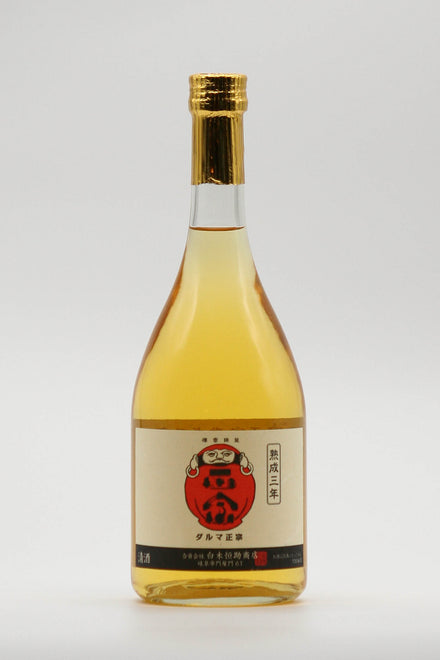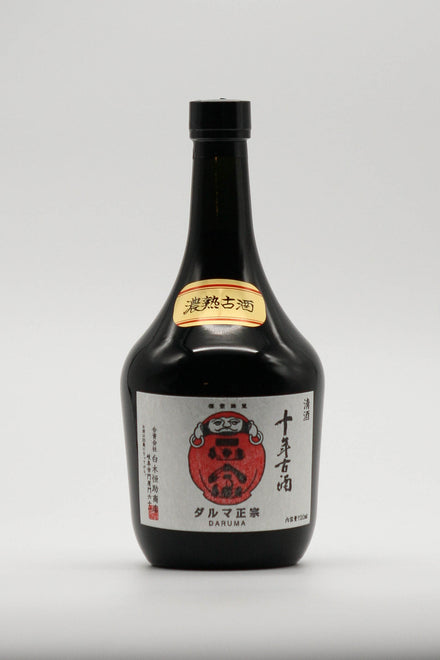A question we often receive from customers is a simple yet fundamental: How does alcohol change as it matures?
We will explain the chemical and physical changes that occur in sake and talk about the original sake quality design that changes the appearance of sake after maturation, as well as the differences in maturation temperature, etc.
The best way to explore this topic may be to try various sake of different ages and see how they differ.
Let's take, for example, Daruma Masamune, brewed by Shiraki Brewery in Hida, Gifu Prefecture.
By comparing their Three Years—an assemblage of sake matured for over three years— and their Ten Years— an assemblage of sake matured for over ten years—you experience the impact that time has on sake.
Both are Junmai sakes brewed using the same No. 7 yeast and polished to 70%, but the golden yellow color of the Three Years has changed to amber after ten years, and the flavor, sweetness, acidity, and aroma have become more complex, increasing the sake's appeal.
Each sake enhances different dishes: sauteed young chicken in a cream sauce goes perfectly with the Three Years, while sweet and sour pork with black vinegar goes perfectly with the Ten Years.
Please give it a try.





